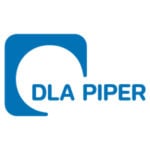-
What forms of security can be granted over immovable and movable property? What formalities are required and what is the impact if such formalities are not complied with?
The type of security granted over an asset in England and Wales largely depends on whether legal title (i.e. ownership in the ordinary sense) to the secured asset is intended to be transferred to the secured party. Security can be in the form of a mortgage or security assignment (transfer of title, security provider retains possession) or a charge (no transfer of title, security provider retains possession). There are also other types of security which apply where the secured party is in possession of the secured asset, e.g. liens and pledges.
Mortgages: To create a mortgage, the legal or beneficial title to the secured asset must be transferred to the security-holder. Mortgages are most commonly granted over real estate, but are also seen in movable property such as ships and airplanes. In respect of real estate, legal mortgages must be in writing and executed as a deed by the security provider (the mortgagor). To take effect as a legal mortgage, a mortgage over registered title must be registered at the Land Registry. If the security is not registered, it will usually take effect as an equitable mortgage, which can undermine the strength of the security in the case of competing claims. Different registration formalities may be applicable depending on the secured asset.
Charges: A charge may be either “fixed” or “floating”; secured lenders will usually aim to ensure that as much of their security is fixed as possible, and then obtain a floating charge over any remaining assets. A fixed charge requires the security provider (the chargor) to hold the charged asset (e.g. shares) to the order of the secured party (the chargee); while a floating charge permits the chargor to deal with the assets in the ordinary course of business until the point at which it crystallises on the occurrence of a pre-agreed trigger, which is usually an event of default or acceleration of the secured debt (the floating charge hovers above a shifting pool of assets such as cash, stock and inventory). Charges are easier to grant than legal mortgages as there are fewer formalities involved. Charges must be in writing and signed by the security provider.
Whether a charge is fixed or floating will depend on: the parties’ intention; the characteristics of the security granted; and, if the contractual position has not been adhered to in practice, potentially also the post-contractual conduct of the parties, rather than the label which the parties have attached to the relevant security. In certain circumstances, it is therefore possible for a purported fixed charge to be re-characterised as a floating charge. This determination will be highly fact-specific. These points were explored in the recent case of Avanti Communications Ltd, Re [2023] EWHC 940 (Ch).
Registration and formalities: Security granted by an English company or LLP must be registered at Companies House within 21 days of creation of it will be void against a liquidator, administrator and any creditor of the company. Other types of security, e.g. over intellectual property, require further registration formalities; as mentioned above, certain mortgages and charges over interests in land must be executed as a deed.
-
What practical issues do secured creditors face in enforcing their security package (e.g. timing issues, requirement for court involvement) in out-of-court and/or insolvency proceedings?
Enforcement options depend on the nature of the security and the provisions of the security document, amongst other matters.
Receivership: There are two main types of receivership under English law: (a) fixed charge receivership, and (b) administrative receivership.
Fixed charge receivership: A secured creditor may enforce its security by appointing a receiver (usually an insolvency practitioner) over the specific secured asset(s), in accordance with the terms of the security document. The appointment can be made without court involvement. Following the appointment, the receiver will usually have broad powers specified in the security document, including to collect in any income from the asset and to sell it. One of the key benefits of receivership is that the receiver’s primary duty is to its appointer , its broader duties are act in good faith and deal fairly and equitably and any excess proceeds from realisation of the charged asset must be returned to the borrower or otherwise applied in accordance with the relevant finance documents.
Administrative receivership: Prior to 2003, administrative receivership used to be a primary remedy for floating charge holders with security over all or substantially all of the company’s assets. However, since 2003 (following the implementation of the Enterprise Act 2002), administrative receivership has been abolished as a remedy for holders of floating charges created post-15 September 2003, except in certain limited circumstances. Administrative receiverships are now very rare in practice. A secured creditor may appoint an administrative receiver (usually an insolvency practitioner) over the whole of the company’s assets. Following the appointment, the administrative receiver will have the powers conferred on it by the Insolvency Act 1986 as well as the powers specified in the security document which will typically give the administrative receiver the power to take custody of the assets, run the company’s business and dispose of the assets in order to repay indebtedness owed to the secured creditor(s) who appointed him.
Power of sale: A creditor may also exercise its power of sale under the security document (if they have a legal mortgage or if the terms of the security document otherwise permit). This permits the creditor to sell the secured asset, without needing to apply to court, and use the proceeds to settle the secured liabilities. A receiver or a creditor selling secured assets is obliged to get the best price reasonably obtainable in the circumstances; no public auction is required unless specified in the security document. One advantage of appointing a receiver is that the lender is not usually responsible for the receiver’s conduct.
Administration: If a creditor has security over all or substantially all of the company’s assets (including a floating charge), this may constitute a “qualifying floating charge” (or QFC). Note, the underlying security document may exclude certain assets from the floating charge which may erode the QFC and impair the ability to appoint an administrator. Once their security becomes enforceable, a QFC holder may appoint an administrator (a licensed insolvency practitioner) over the chargor to realise assets quickly and easily without going to court. This is a popular enforcement option as it creates a moratorium on other enforcement action against the chargor (see also Question 9) and potentially allows a sale of the business as a going concern, thereby maximising value. There is no English reported case law on what the threshold for having security over ‘substantially all’ of a company’s assets is. However, there is commentary which suggests that this phrase means everything other than immaterial or de minimis assets which are so residual as to be irrelevant to the conduct of the company’s business or undertaking. It is therefore a high threshold and consideration should be given when seeking to appoint an administrator as a QFC holder with security over less than 100 per cent. of a company’s assets.
Appropriation: Where the security constitutes a “financial collateral arrangement”, under the Financial Collateral Arrangements (No. 2) Regulations 2003, the enforcement option of appropriation is available. “Financial collateral” includes cash and financial instruments (including shares); the security arrangement must constitute the requisite degree of “possession or control” to qualify as a “financial collateral arrangement”. The remedy of appropriation permits the secured creditor to appropriate (essentially, take possession of) the financial collateral, without applying to court. The power depends on the terms of the security document. If the value of the financial collateral appropriated exceeds the secured debt, the secured creditor must account to the security provider for the excess.
Foreclosure: In theory, the possibility of foreclosure constitutes an additional enforcement option, but this is uncommon in practice for various reasons.
Termination of other agreements: Ipso facto clauses (i.e. clauses that allow one party to a contract to terminate, or impose altered terms, solely on the basis of the insolvency of the counterparty) are prohibited in supply contracts for goods and services (but not financial services) where there is a continuing obligation to supply, as well as in relation to contracts for “essential supplies”. In these cases, suppliers of goods or services are unable to rely on contractual clauses allowing for termination in the event of the counterparty’s insolvency or restructuring (now including if such counterparty is subject to a restructuring plan or the standalone moratorium available under Corporate Insolvency and Governance Act 2020 (“CIGA 2020”). However, this restriction does not extend to schemes of arrangement or restructuring plans under the CA2006 and ipso facto clauses shall remain enforceable and a viable option to terminate a contract/impose altered terms on the insolvency of the counterparty. There are some exemptions, for example a supplier may apply to court to terminate a supply contract on the grounds of hardship.
-
What restructuring and rescue procedures are available in the jurisdiction, what are the entry requirements and how is a restructuring plan approved and implemented? Does management continue to operate the business and / or is the debtor subject to supervision? What roles do the court and other stakeholders play?
In addition to administration and company voluntary arrangements, discussed at Question 8 below (insolvency proceedings which can also be considered restructuring/rescue procedures), a company may utilise a scheme of arrangement or a restructuring plan to reach a compromise agreement with its creditors whilst the existing management continue to operate the business. The restructuring plan procedure was introduced in June 2020 via the CIGA 2020, which also introduced the standalone moratorium described in Question 9 below. The key difference between schemes of arrangement and restructuring plans is that cross-class cram-down is possible in the latter, as explained below.
Schemes of arrangement have proven effective to implement a variety of restructurings, including amends-and-extends, standstills, debt-to-equity swaps and other comprehensive reorganisations. Given the possibility of binding a dissenting class, the restructuring plan procedure increases the possibility of compromising operational as well as financial creditors.
In both schemes of arrangement and restructuring plans, the directors of a company remain in control and there is no independent supervisor or monitor of the compromise if sanctioned by the court.
Entry requirements and court involvement: Both schemes of arrangement and restructuring plans are Companies Act processes, which require two court hearings, including court sanction. The availability of restructuring plans is restricted to companies in some present or prospective financial difficulties affecting the company’s ability to carry on business as a going concern, which the plan must be intended to eliminate or reduce. No such requirement applies for a scheme of arrangement; it is possible to have a fully solvent scheme of arrangement.
The company must have a “sufficient connection” to the UK in order to propose a scheme of arrangement or restructuring plan. There is significant precedent for foreign companies taking steps to establish a “sufficient connection” specifically to be able to propose a scheme of arrangement or restructuring plan in England, and a variety of ways of doing so. Generally this is achieved by one or more of: (i) shifting a company’s centre of main interest to England, (ii) changing the governing law of a company’s underlying debt documents to English law, (iii) adding an English company as an obligor or co-obligor in respect to the foreign company’s debt; or (iv) using an English guarantor of the relevant obligation.
Approval threshold: Stakeholders vote in classes according to their legal rights both before and following the scheme of arrangement/restructuring plan.
For a scheme of arrangement: Every creditor or shareholder whose rights are affected by the plan must be permitted to vote. The court has discretion to sanction the scheme of arrangement (and thereby bind all affected stakeholders, whether secured or unsecured and whether or not they voted in favour, abstained, or did not participate) if the scheme of arrangement has been approved by at least 75% in value and over 50% by number of those voting in each class.
For a restructuring plan: Every creditor or shareholder whose rights are affected by the plan must be permitted to vote. However, an application can be made to exclude classes of creditors / shareholders from voting where the court is satisfied that “none of the members of that class has a genuine economic interest in the company”. The court has discretion to sanction the plan (and thereby bind all affected stakeholders, whether secured or unsecured and whether or not they voted in favour, abstained or did not participate) if the restructuring plan has been approved by at least 75% in value of those voting, in at least one class which would receive a payment, or have a genuine economic interest in the company, in the event of the “relevant alternative”, provided the court is satisfied that none of the members of any dissenting class(es) would be any worse off under the plan than they would be in the event of the “relevant alternative”. The “relevant alternative” is whatever the court considers would be most likely to occur if the plan were not confirmed. The court’s decision in relation to this will be influenced by the valuation evidence and comparator analysis provided by the party applying for the restructuring plan, and can be an area which is closely scrutinised by the court and/or challenged by stakeholders effected by the restructuring plan. The court has made it clear that the sanctioning of a restructuring plan is not a “rubber stamp” and will consider whether the restructuring plan is “just and equitable” and whether all statutory requirements have been complied with.
-
Can a debtor in restructuring proceedings obtain new financing and are any special priorities afforded to such financing (if available)?
There is no express provision for super-priority rescue financing in an English insolvency process, such as the DIP financing regime available under the U.S. Bankruptcy Code. However, credit extended to a company in administration may be given priority over unsecured claims by virtue of classification as an administration expense.
Additionally, new debts and liabilities to which a company becomes subject during a standalone moratorium are given super priority (ranking only behind fixed charge creditors) if unpaid and if the company enters administration or liquidation within 12 weeks following the end of the moratorium. Any scheme of arrangement, CVA or restructuring plan in that 12 week period cannot compromise such liabilities without consent (and such creditors are prohibited from voting on such a scheme of arrangement or restructuring plan, although not a CVA).
To grant new financing of super-priority or intermediate priority, an intercreditor agreement is the simplest option (with many leveraged finance structures having “evergreen” intercreditor agreements in place to facilitate the provision of senior tranches). Where it is not possible to reach agreement with existing creditors, a scheme of arrangement or restructuring plan may be used in certain circumstances to ‘cram-down’ a proposal on a dissenting minority; this could include an offer of new financing to the debtor on a super-priority basis.
-
Can a restructuring proceeding release claims against non-debtor parties (e.g. guarantees granted by parent entities, claims against directors of the debtor), and, if so, in what circumstances?
Yes, in certain circumstances; historically most commonly seen in schemes of arrangement and now also in restructuring plans. Claims against third party guarantors may be released or amended by the scheme of arrangement or restructuring plan if necessary for the successful operation of the scheme or restructuring plan (to avoid ricochet claims against the principal debtor). A release of claims against persons involved in the preparation, negotiation or implementation of a scheme of arrangement or restructuring plan, and their legal advisors, is also permissible. Issues might, however, arise where a scheme of arrangement or restructuring plan creditor has a more tangential claim against a third party. In the case of Oceanfill, the court made it clear that, like a scheme of arrangement, it will not read into a restructuring plan third-party releases beyond those that have been expressly described in the plan and disclosed in the explanatory statement.
-
How do creditors organize themselves in these proceedings? Are advisory fees covered by the debtor and to what extent?
Since the financial crisis of 2007-2008, we have seen a rise in ad hoc creditor committees over formal co-ordination or steering committees. Ad hoc committees are self-formed groups of creditors that will co-ordinate among themselves and the debtor on the implementation of the workout. Although the size of these groups can vary (from a minority ad hoc committee to one that holds substantially all the liabilities of a debtor), the crucial difference between an ad hoc committee and a more formal co-ordination or steering committee is that the former may act unilaterally, and is not necessarily representative of the wider stakeholder classes. Within this reduced scope, ad hoc committees can often act more quickly and more flexibly (but may only speak for one part of the capital structure).
An ad hoc committee will usually need to engage legal and financial advisers. It is market custom (and often required in legal documentation) that the debtor pays the costs of creditors in connection with an event of default or in connection with any protection or enforcement of the security or more generally their rights under the relevant debt documents. This is usually memorialised in any waiver or new documentation entered into with the debtor in connection with the workout. Where an ad hoc committee of creditors is formed, and takes the lead in negotiating and supporting a restructuring , the debtor will typically agree to pay the ad hoc committee’s adviser fees and a fee to the ad hoc committee for the hours that they have dedicated to the restructuring process.
-
What is the test for insolvency? Is there any obligation on directors or officers of the debtor to open insolvency proceedings upon the debtor becoming distressed or insolvent? Are there any consequences for failure to do so?
Test for insolvency: “Insolvency” is not expressly defined under English law but can generally be demonstrated if:
- a debtor is unable to pay its debts as they fall due (the “cash flow” test); or
- its liabilities (including contingent and prospective liabilities) exceed its assets (the “balance sheet” test).
A company will also be insolvent if it fails to comply with a statutory demand for a debt of over £750 in the 21 days after issue or it fails to satisfy enforcement of a judgment debt.
Filing obligations: There is no obligation under English law on directors to commence insolvency proceedings when a company is insolvent. However, directors may be personally liable if they breach certain duties, as set out in Question 16 below. For example, directors can be liable for wrongful trading if they knew or ought to have known that there was no reasonable prospect of the company avoiding insolvent liquidation or administration and, from that point, failed to take every step to minimise potential losses to creditors. There are also potential criminal sanctions for fraudulent trading (which includes where the business was carried on with the intent to defraud creditors).
Use of insolvency tests: The insolvency tests are used to establish whether:
- there are grounds for the company to enter liquidation or administration;
- company was “insolvent” for the purpose of antecedent transaction claims subsequently brought by an insolvency officeholder; and
- there has been an event of default under the company’s finance documents.
-
What insolvency proceedings are available in the jurisdiction? Does management continue to operate the business and / or is the debtor subject to supervision? What roles do the court and other stakeholders play? How long does the process usually take to complete?
The key insolvency procedures are administration, liquidation (also known as winding up) and company voluntary arrangements. Outside formal insolvency proceedings, schemes of arrangement and restructuring plans (as discussed above) have also been used to effect restructurings. The English court has held that the restructuring plan procedure constitutes a bankruptcy/insolvency proceeding (at least for the purposes of the bankruptcy exclusion to the Lugano Convention), principally on the grounds of the threshold conditions to eligibility for a restructuring plan, which require an element of financial difficulty (See Re Gategroup Guarantee Ltd [2021] EWHC 304 (Ch)).
Administration: This is the key insolvency procedure with a view to company rescue. Similar to the U.S. Chapter 11 regime, a company that files for administration has the protection of a statutory moratorium to allow it to be rescued or reorganised or its assets realised. Unlike in Chapter 11, management lose control of the company to an administrator (who is a licensed insolvency practitioner and an officer of the court). However, in recent years, there have been a number of high-profile “light touch” administrations, in which administrators consented to the continued exercise of management powers by the directors, subject to certain restrictions.
The objectives of an administration are, in the following order of priority, to (i) rescue the company as going concern; (ii) achieve a better result for creditors than in a liquidation; or (iii) realise some or all of the company’s assets. Objective (ii) may only be pursued if the administrator thinks objective (i) is not reasonably practicable, or that a better result would be achieved for creditors as a whole. Similarly, objective (iii) may only apply if the administrator thinks it is not reasonably practicable to achieve the first two objectives, and it will not “unnecessarily harm” the interests of the creditors as a whole.
In practice, the overwhelming majority of administrations achieve the second objective and it is exceedingly rare for a company to exit administration and continue its business in the same corporate entity. The administrator’s duties are owed to the creditors as a whole. If the administration has not come to an end within a year, the administration will end automatically unless its term is extended in advance. However, in practice, many administrations are extended beyond a year.
“Pre-pack” administrations have been particularly prevalent in the UK over the last decade. This is an arrangement under which the sale of all or part of the company’s business or assets is negotiated with a purchaser (by putative administrators) prior to the appointment of administrators. Historically, the administrators have affected the sale almost immediately after appointment, without the sanction of the court or creditors. However, from 30 April 2021, substantial disposals by administrators of the company’s business or assets to connected party purchasers (defined broadly and including by reference to certain former connections) within the first 8 weeks of an administration require advance approval from either the creditors or an independent evaluator. Additionally, administrators that implement a pre-pack must make the disclosures to creditors required via a SIP 16 (a standardised disclosure protocol in place for pre-packs).
Liquidation: This is a dissolution procedure involving the termination of the company (and, ultimately, its removal from the register). It involves the appointment of liquidators who collect and sell the company’s assets and distribute the proceeds to creditors (and members, in the unlikely event of a surplus); directors lose control. The liquidator does not have any ability to trade the business.
Company voluntary arrangement (CVA): This insolvency procedure permits a company to make a binding compromise with its creditors. A CVA cannot compromise secured creditors without their consent. A CVA is implemented out of court unless it is challenged. A CVA requires the consent of at least 75% in value of unsecured creditors; further the CVA will not be approved if more than half of the total value of unconnected creditors vote against the CVA. In recent years, CVAs have been used extensively to compromise companies’ leasehold obligations to landlords, especially in the retail and casual dining sector.
Special regimes: A special administration is a formal insolvency procedure that is used in cases where a business provides a statutory or public service (for example, water or energy or charities), or where there is a wider public interest in having a bespoke administration regime. The form of these regimes follows the general process set out in Insolvency Act 1986, but due to the nature of the industry, it is appropriate for the administrator to have modified objectives and corresponding powers to achieve those objectives (e.g. see the Bulb Energy special administration in 2021).
-
What form of stay or moratorium applies in insolvency proceedings against the continuation of legal proceedings or the enforcement of creditors’ claims? Does that stay or moratorium have extraterritorial effect? In what circumstances may creditors benefit from any exceptions to such stay or moratorium?
Stand-alone moratorium: The CIGA 2020 introduced a new, standalone, moratorium to temporarily prevent creditors taking enforcement action in order to allow an eligible company a formal breathing space to propose and pursue a rescue plan. A company is only eligible for the moratorium where it is (and remains) likely that the moratorium will result in the rescue of the company as a going concern. However, broad capital markets exclusions render most bond issuers/guarantors (which includes many businesses in the retail, hospitality and consumer-facing sectors) ineligible for the moratorium. Under the standalone moratorium (subject to certain exceptions):
- restrictions apply to the payment or enforcement of certain “pre-moratorium debts” for which a company has a payment holiday during the moratorium and “moratorium debts”;
- no winding-up petition may be presented or winding-up order made;
- no administration may be commenced; and
- except with court permission (which cannot be sought to enforce a pre-moratorium debt for which the company has a payment holiday):
- no steps may be taken to enforce security — with an important exception for the enforcement of financial collateral arrangements, such as security over shares;
- no proceedings / legal process may be commenced or continued against the company or its property;
- most floating charges may not be crystallised by the floating charge-holder;
- no landlord may exercise any forfeiture rights;
- no steps may be taken to repossess goods under any hire-purchase agreement; and
- the moratorium will initially take effect for 20 business days and can be extended by a further 20 business days.
A notable exception is that payments falling due under a contract involving financial services (among other excluded categories) do not benefit from the payment holiday; if they are not paid, the moratorium cannot continue.
During the moratorium, a company is required to pay new debts/liabilities to which it becomes subject during the moratorium (moratorium debts) and certain pre-moratorium debts which do not benefit from a payment holiday (including financial debt, rent in respect of the moratorium period and wages and redundancy payments). If these amounts (other than financial debt which has been accelerated) are not paid, they will be treated as super-priority debts if the company enters administration or liquidation within 12 weeks following the end of the moratorium. Any scheme of arrangement, CVA or restructuring plan in that 12 week period cannot compromise such liabilities without consent (and such creditors are prohibited from voting on such a scheme of arrangement or restructuring plan, although not a CVA).
The moratorium generally prohibits secured creditors from appointing an administrator and enforcing their security (subject to certain exceptions, including enforcement of financial collateral arrangements).
Due to the short time period for the moratorium and the exclusion of financial contracts from the payments holiday, there has been limited uptake of the process since it has been introduced.
Moratorium in administration: An automatic and wider moratorium applies when a company is in administration (and, in some circumstances, an interim moratorium pending appointment of administrators). The administration moratorium prohibits any steps/actions from being commenced or continued against the company and its property, except with the administrator’s consent or the permission of the court. This includes preventing any secured creditor from enforcing its security interest (unless the security constitutes a financial collateral arrangement – see Question 2. above regarding the remedy of appropriation, which is exempt from the moratorium in administration).
Liquidation: In a compulsory liquidation, no action or proceedings can be continued or commenced except with the leave of the court. Creditors may however take steps to enforce their security or repossess assets which are not actually owned by the company (such as goods subject to a retention of title clause). In a voluntary liquidation, there is no moratorium on legal proceedings against the company.
None of a scheme of arrangement, restructuring plan or a CVA offers a moratorium (unless combined with the standalone moratorium or an administration). However, English courts have a general case management power to stay proceedings, which they may use e.g. to stay a winding up petition or enforcement of security where a company is in the process of a restructuring – as in the cases of Vietnam Shipbuilding (2013), Travelodge (2020) and Virgin Active (2021).
Extra-territorial effect of moratorium: Unlike in the U.S., a moratorium under English law does not purport to have extraterritorial effect. Its recognition under the laws of another jurisdiction will depend on applicable national law. In order for English insolvency procedures to be recognised in the U.S., Chapter 15 proceedings need to be pursued. A U.S. court will generally provide recognition under Chapter 15 provided that fundamental standards of procedural fairness and due process have been upheld during the relevant English insolvency process.
-
How do the creditors, and more generally any affected parties, proceed in such proceedings? What are the requirements and forms governing the adoption of any reorganisation plan (if any)?
Schemes of Arrangement / Restructuring Plans: the party proposing the process must first apply to the court for an order to convene a meeting to approve the scheme of arrangement / restructuring plan. If the court grants this order, a date will be set for the convening meeting and notice, together with an explanatory statement, will be provided to those creditors and any other stakeholders voting on the scheme of arrangement / restructuring plan. If approved, an application will be made to the court to sanction the scheme of arrangement / restructuring plan if the requisite voting thresholds are obtained (see Question 3 above). Once effective, the scheme of arrangement / restructuring plan will be binding on all creditors and/or members in the relevant classes. The required forms/documents for a scheme of arrangement/restructuring plan are:
- The Scheme of Arrangement / Restructuring Plan Document: is the legally binding document setting out the terms of the scheme of arrangement / restructuring plan;
- Explanatory Statement: sets out the key terms of the scheme of arrangement / restructuring plan and is sent to the creditors and/or members once the meeting to vote on the scheme of arrangement / restructuring plan is convened; and
- Practice Statement Letter: is sent to creditors and/or members prior to the hearing, informing them of the intention and purpose of the proposed scheme of arrangement / restructuring plan.
There are in addition to a number of other documents required for the court process (for instance, claim forms and witness statements), as well as the relevant restructuring, finance and corporate documents to implement the relevant scheme of arrangement or restructuring plan.
Administration: as soon as possible after coming into office, administrators will send notice to all creditors, informing them that administration has been entered. The administrators will then deliver their proposal for the administration and will continue to give updates on the progress of the administration every 6 months. The initial proposals must be approved by a simple majority of creditors (with each pound of debt representing one vote) that have submitted a proof of debt and which are taking part in the vote. It is also possible for the proposals to be approved via deemed consent. Creditors may challenge the conduct of an administrator on the grounds that it has caused them unfair harm. The required forms/documents for an administration are:
- Notice of Appointment: as soon as reasonably practicable after being appointed, an administrator must provide notice of its appointment to the company and all creditors as well as publishing a notice in the London Gazette;
- Administrators Proposals: sets out the details of how the administrator intends to carry out the administration in accordance with the statutory objectives; and
- Progress Reports: bi-annual progress reports will be published, describing the progress made in achieving the purpose of the administration. A final progress report will be produced when the administration ends.
Liquidation: compulsory liquidation is entered pursuant to an order delivered by the court after a petition has been made, usually by a creditor. Once placed into liquidation a stay is placed on the continuation or commencement of proceedings against the company in liquidation. The liquidator will provide a final report to creditors on the completion of the liquidation which will be sent to creditors and members.
Company voluntary arrangement: those proposing the CVA, together with the CVA supervisor, prepare the CVA proposals. The creditors will be invited to vote on the proposals and provided that 75 per cent. vote in favour and those voting against it do not represent more than 50 per cent. of unconnected creditors, in each case by value, the CVA will be passed. A CVA can be challenged for 28 days after the date of approval, on the grounds of unfair prejudice or material irregularity. The required forms/documents for a CVA are:
- CVA Proposal: sets out the proposed terms of the CVA and is drafted by the party proposing the CVA, usually together with the proposed supervisor of the CVA;
- Report to Court: if the proposed CVA supervisor is not an administrator or liquidator, a report must be submitted to the court explaining that, in the supervisor’s opinion, the proposal should be considered by the company’s creditors and member;
- CVA Document: sets out the terms of the CVA as approved by the creditors; and
- Final Report: on conclusion of the CVA, the supervisor must send a final report to all creditors.
-
How do creditors and other stakeholders rank on an insolvency of a debtor? Do any stakeholders enjoy particular priority (e.g. employees, pension liabilities, DIP financing)? Could the claims of any class of creditor be subordinated (e.g. recognition of subordination agreement)?
General ranking: On the insolvency of a debtor, proceeds from the realisation of assets must be distributed by an insolvency practitioner, in simple terms, as follows: fixed charge holders; expenses in the insolvency proceedings; preferential creditors; prescribed part creditors; floating charge holders; unsecured creditors’ statutory interest on provable debts; subordinated creditors (in accordance with the terms of the subordination agreement/provision); and finally, shareholders. Where winding-up/administration proceedings are begun within 12 weeks following the end of any new, standalone, moratorium, unpaid moratorium debts and unpaid priority pre-moratorium debts (see Question 7) are paid after fixed charge holders but in priority to all other categories.
Preferential creditors: Preferential creditors include certain (limited) employee remuneration claims and, since 1 December 2020, HMRC (the UK tax authority) in respect of certain tax debts, including VAT and PAYE. In addition, a “prescribed part” is carved out of the proceeds of floating charge realisations, which is made available to satisfy unsecured debts, up to a cap of £600,000 (or, where the relevant floating charge was created on or after 6 April 2020, £800,000); the increased cap also applies where the relevant floating charge was created before 6 April 2020 if a later floating charge (over any of the company’s assets) ranks equally or in priority.
Equitable subordination: There is no concept of equitable subordination in England and Wales.
-
Can a debtor’s pre-insolvency transactions be challenged? If so, by whom, when and on what grounds? What is the effect of a successful challenge and how are the rights of third parties impacted?
Certain pre-insolvency transactions may be challenged under the Insolvency Act 1986.
Grounds of challenge: Possible grounds for challenge include transactions at an undervalue, preferences, extortionate credit transactions, transactions defrauding creditors and property dispositions after the commencement of a winding up. Each of these grounds essentially aims to unwind transactions that would otherwise have frustrated or allowed the company to avoid the payment of creditors on insolvency in accordance with the statutory priority of claims. In most cases, only an administrator or liquidator of a company may bring a claim challenging a reviewable transaction (although claims for transactions at an undervalue and preferences can be assigned by the officeholder to any third party). However, where a transaction defrauding creditors has occurred, any party prejudiced by that transaction may apply to the court for an order clawing back the assets subject to the transaction. Additionally, any floating charge made within the relevant look-back period will automatically be void to the extent that the value of the charged assets exceeds the consideration or reduction of debt received in exchange for the floating charge.
Look-back period: The look-back period ranges between two years prior to the commencement of insolvency proceedings where the transaction was with a connected party (including directors, shadow directors, and associated persons and companies) to six months for other parties.
Court order / impact on third parties: The court generally has a wide discretion to make any order it thinks fit for restoring the position to what it would have been but for the relevant antecedent transaction. There are protections for third parties who acted in good faith, for value and without notice of the relevant circumstances.
-
How existing contracts are treated in restructuring and insolvency processes? Are the parties obliged to continue to perform their obligations? Will termination, retention of title and set-off provisions in these contracts remain enforceable? Is there any ability for either party to disclaim the contract?
The general rule is that a company’s contracts remain enforceable upon insolvency. Properly drafted, a retention of title clause will survive an insolvency filing.
Reliance by suppliers on ipso facto clauses (see Question 2 above) – clauses that allow one party to a contract to terminate, or impose altered terms, solely on the basis of the insolvency of the counterparty – in contracts for the supply of goods and services is prohibited where the counterparty becomes subject to a relevant insolvency procedure (including the restructuring plan and the moratorium, but not including a scheme of arrangement). Furthermore, the supplier may not (i) take action in respect of breaches of contract prior to the commencement of the relevant insolvency process or (ii) make payment of outstanding amounts (in respect of supplies made prior to the insolvency trigger) a condition of continuing supply. This does not prohibit termination for other breaches or in accordance with the terms of the contract. Certain exceptions apply e.g. for financial services contracts and contracts related to aircraft equipment.
There is also an ‘anti-deprivation’ principle which prohibits any contract from providing that property will transfer to another on the occurrence of an insolvency event.
In a liquidation or a distributing administration, statutory set-off applies where a creditor of the insolvent company is also a debtor of the company. Set-off is mandatory and automatic, and the relevant rules supersede all other contractual rights of set-off that are inconsistent with them.
A liquidator (but not an administrator) has the power to unilaterally disclaim onerous executory contracts to avoid incurring future liabilities.
-
What conditions apply to the sale of assets / the entire business in a restructuring or insolvency process? Does the purchaser acquire the assets “free and clear” of claims and liabilities? Can security be released without creditor consent? Is credit bidding permitted? Are pre-packaged sales possible?
An administrator can sell assets free and clear of security either with the relevant security-holder’s consent or with a court order (provided that the proceeds are used to discharge the sums secured by the security).
Unlike in a solvent sale, a buyer from an administrator will generally be expected to acknowledge that it enters into the agreement without reliance on any warranties or representations. A buyer may also be expected to provide wide ranging indemnities to the administrator.
Credit bidding in an administration sale process is permitted (including where the credit bidder is an assignee of the original creditor, and whether or not the administration is a pre- pack administration). However, there is no specific legislation on this point. It will be up to the administrator to decide whether a particular deal is in the best interests of the creditors and should therefore be implemented.
The administrators must comply with relevant legislation, including “Statement of Insolvency Practice 16” in the case of pre-pack administrations (which are possible and common), which include certain marketing / valuation requirements. Greater protections/constraints apply in sales to connected parties (widely defined); in particular, administrators cannot make a substantial disposal of a company’s property to a person connected with the company (defined broadly and including by reference to certain former connections) within the first 8 weeks of the administration, without either:
- the approval of creditors; or
- an independent written opinion obtained by the connected party purchaser; the opinion must meet certain qualifying conditions.
-
What duties and liabilities should directors and officers be mindful of when managing a distressed debtor? What are the consequences of breach of duty? Is there any scope for other parties (e.g. director, partner, shareholder, lender) to incur liability for the debts of an insolvent debtor and if so can they be covered by insurances?
Directors of an English company owe fiduciary duties to the company itself. In the case of a healthy company, directors have a duty to act in a way most likely to promote the company’s success for the benefit of its shareholders as a whole. However, the greater the financial difficulties of a company, the greater weight the directors should give to the interests of the creditors over the interests of shareholders, where those interests conflict. The Supreme Court in BTI 2014 LLC v Sequana SA & Ors [2022] UKSC 25 held that there was no free-standing duty to creditors owed by directors, but that this is an extension of the duty to act in the best interests of the company.
A breach of these duties may lead to directors incurring personal liability or being disqualified from acting as a director or from being involved in the management of a company for a specified period. In some instances, it may lead to a criminal prosecution.
The principal potential causes of action are: wrongful trading, fraudulent trading, and a claim for misapplication of company property / misfeasance. Directors are generally most cognisant of the wrongful trading offence. Wrongful trading is established where a director knew or ought to have concluded that there was no reasonable prospect that the company would avoid insolvent liquidation or administration, and the director failed to take every step to minimise potential losses for creditors.
In addition to financial penalties, these offences can lead to a disqualification order for future directorships.
Liability may extend to third parties in certain, fairly limited, circumstances. The Transfer of Undertakings (Protection of Employment) (“TUPE”) regulations may apply when assets are purchased out of an administration: where the business is being carried on is substantially the same as before, all liabilities of employment transfer to the purchaser. This will include redundancy costs and unfair dismissal claims.
The Pensions Regulator can exercise moral hazard powers over a connected third party that has acted in a way that has been materially detrimental to a defined benefit pension scheme of the debtor. The Regulator can currently issue a contribution notice against employers and their connected persons where relevant, demanding payment to remedy any shortfall in the pension scheme. Additional potential civil and criminal penalties were introduced in October 2021 under the Pension Schemes Act 2021. However, to date these measures have not been widely used.
Further, the European Commission and the Competition and Markets Authority have the power to reach behind the corporate veil when fines they have issued are left unpaid by an insolvent debtor and where there is a structural link with an economic successor entity.
-
Do restructuring or insolvency proceedings have the effect of releasing directors and other stakeholders from liability for previous actions and decisions? In which context could the liability of the directors be sought?
There is no legislative provision to release directors or other stakeholders from liability for previous actions and decisions leading up to the relevant restructuring or insolvency proceedings. However, it is common practice for extensive releases to be commercially negotiated and provided to all parties involved in the relevant proceedings within the underlying documents giving effect to the restructuring. For example, claims against third party guarantors may be released or amended by the scheme of arrangement/restructuring plan if necessary for the successful operation of the scheme of arrangement/restructuring plan (to avoid ricochet claims against the principal debtor).
-
Will a local court recognise foreign restructuring or insolvency proceedings over a local debtor? What is the process and test for achieving such recognition? Does recognition depend on the COMI of the debtor and/or the governing law of the debt to be compromised? Has the UNCITRAL Model Law on Cross Border Insolvency or the UNCITRAL Model Law on Recognition and Enforcement of Insolvency-Related Judgments been adopted or is it under consideration in your country?
The UK has adopted the UNCITRAL Model Law on Cross Border Insolvency, via the Cross Border Insolvency Regulations 2006. This permits recognition of the foreign proceedings, and assistance for the foreign insolvency officeholder (including a moratorium), upon application to the court – usually a fairly predictable court procedure. The consequences of such recognition depends on the centre of main interests (“COMI”) of the debtor. Proceedings will only be recognised as “foreign main proceedings”, for which there is an automatic stay, where the proceedings are opened in the jurisdiction where the debtor has its COMI.
However – critically – such recognition does not necessarily extend to recognition/enforcement of the scheme of arrangement/plan with foreign proceedings. In essence:
- If debt (or shareholder rights) compromised under the plan are governed by English law, the English court will only recognise/enforce the compromise in respect of creditors(/shareholders) subject to the foreign proceedings – owing to the so-called “rule in Gibbs”.
- For these purposes, creditors will be subject to the foreign proceedings if they were present in the foreign jurisdiction when the proceedings commenced, submitted a proof of debt or voted in the proceedings (among other things).
- A parallel UK process may therefore be required to compromise the English law debt, if not all creditors are subject to the foreign proceedings and if parties require certainty.
- On 10 July 2023, the UK Government Insolvency Service announced that it would enact the UNCITRAL’s Model Law on Enterprise Group Insolvency (MLEG), which will, once enacted, help to facilitate the co-ordination of multiple insolvency proceedings taking part in different jurisdictions in relation to companies within the same corporate group. The Government intends to implement this “at the earliest opportunity” but it is not clear how soon this will be. However, by contrast, the Government confirmed that it will not yet proceed to implement ‘Article X’ of the UNICTRAL’s Model Law on Recognition and Enforcement of Insolvency-Related Judgments, which seeks to facilitate recognition of insolvency related judgements across jurisdictions.
Rome I Regulation (Rome I) remains in effect with respect to the UK, despite it having left the EU. This allows a scheme of arrangement / restructuring plan order to be recognised throughout the EU.
-
For EU countries only: Have there been any challenges to the recognition of English proceedings in your jurisdiction following the Brexit implementation date? If yes, please provide details.
N/A
-
Can debtors incorporated elsewhere enter into restructuring or insolvency proceedings in the jurisdiction? What are the eligibility requirements? Are there any restrictions? Which country does your jurisdiction have the most cross-border problems with?
Yes; the jurisdictional threshold varies according to the relevant procedure, and has fairly recently expanded following the end of the Brexit transition period. There are a variety of ways for a foreign debtor to access the jurisdiction, including e.g. by shifting the company’s COMI to the UK.
Additionally, the potential to release thirty party with respect to the primary obligations of the company subject to a scheme of arrangement / restructuring plan, in order to avoid ricochet claims (as described in the answer to Question 5 above), extends to third parties incorporated in other jurisdictions.
-
How are groups of companies treated on the restructuring or insolvency of one or more members of that group? Is there scope for cooperation between office holders? For EU countries only: Have there been any changes in the consideration granted to groups of companies following the transposition of Directive 2019/1023?
Under English law, each company in a corporate group is treated as a single entity and its directors are required to consider the interests of creditors in relation to that particular company (rather than the group as a whole). Unlike in Chapter 11, we do not have a formal concept of group proceedings / joint debtors, or substantive consolidation. However, the commercial reality is that what is beneficial for a group is often beneficial for each individual company, and there is scope for co-ordination between affiliated entities.
-
Is your country considering adoption of the UNCITRAL Model Law on Enterprise Group Insolvency?
See response to Question 17.
-
Are there any proposed or upcoming changes to the restructuring / insolvency regime in your country?
See response to Question 17 relating to the UNCITRAL Model Law on Enterprise Group Insolvency and the UNCITRAL Model Law on Recognition and Enforcement of Insolvency-Related Judgments.
Further, the UK government committed to reviewing the permanent measures implemented through the CIGA 2020 within three years of coming into force. The Insolvency Service published its official “Post-implementation review” on 26 June 2023 which suggests possible refinements going forward. These include matters such as (i) exploration of whether the financial burden could be eased, particularly in respect of small and medium-sized enterprises, (ii) amendments to the standalone moratorium to increase its uptake, and (iii) providing for multiple companies within the same group to propose a plan by introducing a “lead company” concept. There are no timescales as to when any further guidance or consultations will take place.
-
Is your jurisdiction debtor or creditor friendly and was it always the case?
The UK has historically been perceived as a creditor-friendly jurisdiction (in particular for senior secured creditors), but it is extremely effective for both creditors and debtors. The Covid-19 crisis prompted a move towards a more debtor-friendly restructuring regime, with the fast-tracking of the introduction of the restructuring plan (offering cross-class cram-down to facilitate rescue), the moratorium and the restrictions on the exercise of ipso facto clauses in certain cases.
The English courts are the forum of choice for major international financial and other contracts, because the system is seen as flexible and commercially-oriented whilst also offering certainty and predictability – with considerable deference to the commercial terms agreed by the parties – and the highest possible reputation for independence / lack of corruption.
Overseas debtors have increasingly looked to take advantage of the English restructuring and insolvency framework, including taking steps to establish jurisdiction here e.g. by moving the debtor’s COMI, amending the governing law of their debt documents, or otherwise. However, given restructuring procedures are now being introduced across Europe, there may be less need for European debtors to avail themselves of English proceedings in future.
-
Do sociopolitical factors give additional influence to certain stakeholders in restructurings or insolvencies in the jurisdiction (e.g. pressure around employees or pensions)? What role does the State play in relation to a distressed business (e.g. availability of state support)?
Generally, the UK does not have the major sociopolitical factors impacting restructurings that exist in certain other jurisdictions. State involvement in distressed businesses is generally limited to non-existent, although there has been a recent trend for certain very large UK companies to be liquidated with the Official Receiver acting as liquidator (British Steel and Carillion in 2018 and Thomas Cook in 2019).
Certain unpaid contributions into occupational pension schemes and employee remuneration and accrued holiday entitlements are categorised as preferential debts and will rank ahead of floating charge holders in the event of a company’s insolvency. In December 2020, the Government reformed the preferential creditor regime, to make the UK tax authority, HMRC, a “secondary preferential creditor” for certain tax debts, including VAT and PAYE. HMRC is becoming increasingly active in raising its objections to restructuring plans and its objections have contributed to the rejection of some restructuring plans to date (See Re Nasmyth Group Ltd [2023] EWHC 988 (Ch) and Re Great Annual Savings Company Ltd [2023] EWHC 1141 (Ch)).
HMRC also issued guidance in November 2023, detailing when it will support companies restructuring their debts via a scheme of arrangement or a restructuring plan. The guidance clarifies that HMRC will consider support on a case-by-case basis, contingent on the scheme of arrangement or restructuring plan having a realistic chance of success. Key requirements include early engagement (and notification), full disclosure of relevant financial information, and an explanation of how the restructuring will succeed and benefit all creditors. Importantly, companies must ensure all tax returns are filed before HMRC will consider supporting the scheme of arrangement or restructuring plan.
The Pension Protection Fund provides compensation for defined benefit occupational pension scheme members on an employer’s insolvency. The Pensions Regulator has very wide “moral hazard” or “anti-avoidance” powers to make third parties liable to provide support or funding to a defined benefit occupational pension scheme in certain circumstances. Additional civil and criminal penalties for conduct putting accrued benefit schemes at risk or preventing the recovery of pension scheme debt became effective in autumn 2021.
Large pension schemes of debtors in difficulty will attract greater public attention and government intervention is more likely, e.g. by seeking to facilitate a deal between the debtor, the Pensions Regulator and unions (if any). Aside from these considerations, state involvement is generally limited.
Further, as discussed above in Question 8 above, there are special administration regimes in place for certain sectors where the industry provides a statutory or public service or supply function, such as water or energy, and the continuity of the critical service is particularly important or important to the stability of the financial system. The special objectives of the administrator usually prioritise the continued supply of the service or supply.
-
What are the greatest barriers to efficient and effective restructurings and insolvencies in the jurisdiction? Are there any proposals for reform to counter any such barriers?
There are three, in our view: the scope of the moratorium, questions of UK recognition of foreign plans of reorganisation, and questions of EU recognition of UK proceedings following Brexit.
- Scope of the moratorium:various aspects of the new moratorium render the breathing space it offers only limited in scope. As discussed in Question 22 above, the Insolvency Service published its official “Post-implementation review” on 26 June 2023 which suggests possible refinements going forward, particularly in respect of the standalone moratorium. However, there are no timescales or suggested next steps for further guidance/consultations and so it remains to be seen whether the moratorium criteria and applicability will become less limited in scope.
- UK recognition of foreign plans of reorganisation: See Question 17 above. While the UK government announced in July 2023 its intention to legislate to implement the UNCITRAL’s Model Law on Enterprise Group Insolvency at the earliest opportunity, the timing of the implementation process remains uncertain. Equally, the UK plans to consult as to whether to implement the new UNCITRAL Model Law on Insolvency-Related Judgments, but the timing and outcome of that consultation remain uncertain.
- Post-Brexit limitations on European recognition of UK proceedings: as of 1 January 2021, EU member states no longer automatically recognise UK insolvency proceedings. Recognition is a matter of the private international law regimes in each Member State. The loss of automatic recognition of UK proceedings across the EU may make it more complex, lengthy and expensive to resolve cross-border mandates, raising the prospect that parallel proceedings may be necessary if certainty is required. See for example the following restructurings that have used parallel proceedings: Vroon, which used a Dutch WHOA with an English scheme of arrangement, Cimolai, Italian concordata preventive with an English restructuring plan and McDermott, Dutch WHOA with an English restructuring plan To date, the English courts have taken a pragmatic approach to sanctioning schemes of arrangement and restructuring plans unless there is “no reasonable prospect of the scheme having substantial effect”, especially where there is very substantial support for the scheme of arrangement or plan and, as noted in the response to Question 17 above, Rome I ensures that schemes of arrangement and restructuring plans are recognised in EU member states. However, the acid test for recognition will occur if a dissenting creditor seeks to pursue remedies and / or challenge the effectiveness of a UK restructuring elsewhere. This has yet to occur in a post-Brexit context, so far as the authors are aware.
United Kingdom: Restructuring & Insolvency
This country-specific Q&A provides an overview of Restructuring & Insolvency laws and regulations applicable in United Kingdom.
-
What forms of security can be granted over immovable and movable property? What formalities are required and what is the impact if such formalities are not complied with?
-
What practical issues do secured creditors face in enforcing their security package (e.g. timing issues, requirement for court involvement) in out-of-court and/or insolvency proceedings?
-
What restructuring and rescue procedures are available in the jurisdiction, what are the entry requirements and how is a restructuring plan approved and implemented? Does management continue to operate the business and / or is the debtor subject to supervision? What roles do the court and other stakeholders play?
-
Can a debtor in restructuring proceedings obtain new financing and are any special priorities afforded to such financing (if available)?
-
Can a restructuring proceeding release claims against non-debtor parties (e.g. guarantees granted by parent entities, claims against directors of the debtor), and, if so, in what circumstances?
-
How do creditors organize themselves in these proceedings? Are advisory fees covered by the debtor and to what extent?
-
What is the test for insolvency? Is there any obligation on directors or officers of the debtor to open insolvency proceedings upon the debtor becoming distressed or insolvent? Are there any consequences for failure to do so?
-
What insolvency proceedings are available in the jurisdiction? Does management continue to operate the business and / or is the debtor subject to supervision? What roles do the court and other stakeholders play? How long does the process usually take to complete?
-
What form of stay or moratorium applies in insolvency proceedings against the continuation of legal proceedings or the enforcement of creditors’ claims? Does that stay or moratorium have extraterritorial effect? In what circumstances may creditors benefit from any exceptions to such stay or moratorium?
-
How do the creditors, and more generally any affected parties, proceed in such proceedings? What are the requirements and forms governing the adoption of any reorganisation plan (if any)?
-
How do creditors and other stakeholders rank on an insolvency of a debtor? Do any stakeholders enjoy particular priority (e.g. employees, pension liabilities, DIP financing)? Could the claims of any class of creditor be subordinated (e.g. recognition of subordination agreement)?
-
Can a debtor’s pre-insolvency transactions be challenged? If so, by whom, when and on what grounds? What is the effect of a successful challenge and how are the rights of third parties impacted?
-
How existing contracts are treated in restructuring and insolvency processes? Are the parties obliged to continue to perform their obligations? Will termination, retention of title and set-off provisions in these contracts remain enforceable? Is there any ability for either party to disclaim the contract?
-
What conditions apply to the sale of assets / the entire business in a restructuring or insolvency process? Does the purchaser acquire the assets “free and clear” of claims and liabilities? Can security be released without creditor consent? Is credit bidding permitted? Are pre-packaged sales possible?
-
What duties and liabilities should directors and officers be mindful of when managing a distressed debtor? What are the consequences of breach of duty? Is there any scope for other parties (e.g. director, partner, shareholder, lender) to incur liability for the debts of an insolvent debtor and if so can they be covered by insurances?
-
Do restructuring or insolvency proceedings have the effect of releasing directors and other stakeholders from liability for previous actions and decisions? In which context could the liability of the directors be sought?
-
Will a local court recognise foreign restructuring or insolvency proceedings over a local debtor? What is the process and test for achieving such recognition? Does recognition depend on the COMI of the debtor and/or the governing law of the debt to be compromised? Has the UNCITRAL Model Law on Cross Border Insolvency or the UNCITRAL Model Law on Recognition and Enforcement of Insolvency-Related Judgments been adopted or is it under consideration in your country?
-
For EU countries only: Have there been any challenges to the recognition of English proceedings in your jurisdiction following the Brexit implementation date? If yes, please provide details.
-
Can debtors incorporated elsewhere enter into restructuring or insolvency proceedings in the jurisdiction? What are the eligibility requirements? Are there any restrictions? Which country does your jurisdiction have the most cross-border problems with?
-
How are groups of companies treated on the restructuring or insolvency of one or more members of that group? Is there scope for cooperation between office holders? For EU countries only: Have there been any changes in the consideration granted to groups of companies following the transposition of Directive 2019/1023?
-
Is your country considering adoption of the UNCITRAL Model Law on Enterprise Group Insolvency?
-
Are there any proposed or upcoming changes to the restructuring / insolvency regime in your country?
-
Is your jurisdiction debtor or creditor friendly and was it always the case?
-
Do sociopolitical factors give additional influence to certain stakeholders in restructurings or insolvencies in the jurisdiction (e.g. pressure around employees or pensions)? What role does the State play in relation to a distressed business (e.g. availability of state support)?
-
What are the greatest barriers to efficient and effective restructurings and insolvencies in the jurisdiction? Are there any proposals for reform to counter any such barriers?















